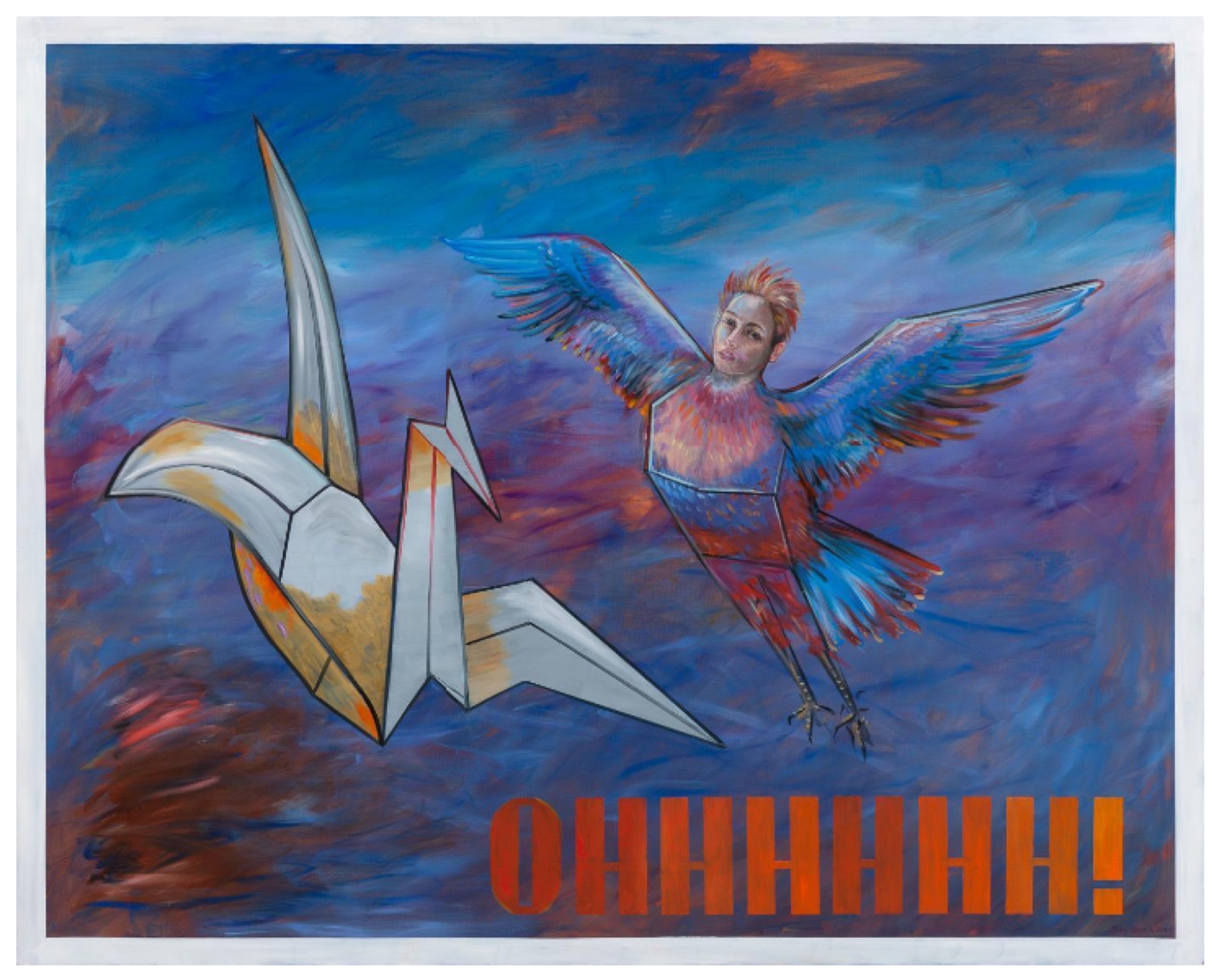
If local art was more loyal, or if we cared more about elders here, you could easily see how the great Juan Davila might be esteemed as a father figure by young artists in Melbourne today. His joy, his intelligence, his pervy fecundity and his peculiar brand of beauty has children at many Spring1883 booths. The patriarch of Neon Parc, you might say; if the artists in FUTURES or Discordia need a daddy, they could do worse than this powerfully strange painter in the online booth of Kalli Rolfe Contemporary Art.

With the most expensive work at the fair—the online host, Artsy has a “Sort by: Price (desc.)” feature—Davila’s enormous canvas Ohhhhhh! (2014) is just big enough to spark joy through my computer screen. I react strongly against his kitsch handling of warm and cool toned paint, but I know that’s the point. Justin Clemens once pointed out that Davila’s colours “are at once quite horrible and quite attractive simultaneously”. Still Life with Bleeding Heart (1992) is even more delightful and contains the fragmented politics of Davila’s classic appropriation era. Yet just as I’m appreciating Davilas-past, the artist’s newest pieces appear to rip some pleasure from the heart of his work. A series of seven works on paper, all attractive in hue, have their centre torn out. Has Davila removed a figure from these landscapes? I am not quite sure, but the holes speak to an undeniable frustration of 2021, along with a kind of wordlessness that feels new for this painter of typically chatty canvases.

Davila’s relevance to young contemporary painters might be contrasted with Kalli Rolfe’s other heavy-hitter, Howard Arkley, once the belle of Melbourne. Arkley’s use of spray-paint, which looks inconsequential on screen but is so light and pretty in person, seems to have no real progeny among today’s artists. Neither this work or his signature dense patterns seem relevant right now. Maybe they will again someday.
I click on all of Anne Wallace’s cinematic paintings, expecting them to be large like life-size movie sets. To my surprise they are all small works on paper. Although I can see they want my concentration, I simply cannot spend time with them online. I restlessly click through each painting; their drama is for a different day.

Issue No. 1
Grab a copy of Memo’s first glossy annual magazine issue, featuring an extended artist focus on Archie Moore, the 2024 Venice Biennale Australian Representative, with essays by Rex Butler, Tara Heffernan, Tristen Harwood, and Hilary Thurlow.
Issue 1 features articles by Audrey Schmidt, Philip Brophy, Helen Hughes, The Manhattan Art Review’s Sean Tatol, Cameron Hurst, Chelsea Hopper, among your favourite regular Memo contributors. There are reviews and articles, including on Melbourne design art, French literature’s ageing enfant terrible, Michel Houellebecq, Derek Jarman’s Blue (1993), the celebrated Spike magazine cultural critic, Dean Kissick, the local cult-favourite Jas H. Duke, and much, much more.
Memo Magazine, 256 pages, 16 x 25 cm
I am in a bad mood now. Davila’s joy has worn off. I wonder if Jan van Schaik glues his tasteful Lego sculptures together. I really like Alison Burton’s fleshy heads that all have some sort of bandaged ailment. But then I see that they are titled From the Museum of Anxiety (2020–21), and I suddenly don’t want to look at any 2021 art anymore. If I am going to have to look at art primarily through my laptop again, I am going to need a bit more escapism, please. I am going to need us to at least pretend that we’re having fun. Luckily, the children of Davila still know how to be silly. I filter the whole art fair by “Price (asc.)” and find a vortex of Sea Monkeys (2021) painted by Matilda Davis, with a horrid-yet-appealing colour palette. It’s only $300 and, suddenly, I remember that I love Spring1883.
